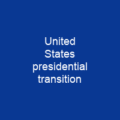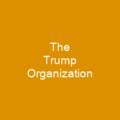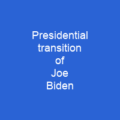This article lists the members of President Donald Trump’s Cabinet. Trump assumed office on January 20, 2017 and the President has the authority to nominate members of his Cabinet to the United States Senate for confirmation. Before confirmation and during congressional hearings a high-level career member of an executive department heads this pre-confirmed cabinet on an acting basis. The Cabinet’s creation was part of the transition of power following the 2016 United States presidential election.
About Cabinet of Donald Trump in brief
 This article lists the members of President Donald Trump’s Cabinet. Trump assumed office on January 20, 2017 and the President has the authority to nominate members of his Cabinet to the United States Senate for confirmation. Before confirmation and during congressional hearings a high-level career member of an executive department heads this pre-confirmed cabinet on an acting basis. The Cabinet’s creation was part of the transition of power following the 2016 United States presidential election. Despite being nominated promptly during the transition period, most cabinet members were unable to take office on Inauguration Day because of delays in the formal confirmation process. By February 8, 2017, President Trump had fewer cabinet nominees confirmed than any prior president two weeks into his mandate, except George Washington. The last Cabinet member, Robert Lighthizer, took office as U.S. Trade Representative more than four months after his nomination. The cabinet is largely made up of nominees who have business experience but minimal experience in the government when compared to the administrations of Ronald Reagan, George H. W. Bush, Bill Clinton, George W. Bush and Barack Obama. There are no economists in President Trump’s cabinet compared to previous presidents’ cabinets. Several of his cabinet nominees politically opposed the federal departments they were selected to lead. In terms of total personal wealth, Trump’s cabinet is the wealthiest in modern American history. The Pew Research Center also noted that Trump is one of the most business-heavy in American history: A third of the department heads in the Trump administration will be people whose prior experience has been entirely in the public sector.
This article lists the members of President Donald Trump’s Cabinet. Trump assumed office on January 20, 2017 and the President has the authority to nominate members of his Cabinet to the United States Senate for confirmation. Before confirmation and during congressional hearings a high-level career member of an executive department heads this pre-confirmed cabinet on an acting basis. The Cabinet’s creation was part of the transition of power following the 2016 United States presidential election. Despite being nominated promptly during the transition period, most cabinet members were unable to take office on Inauguration Day because of delays in the formal confirmation process. By February 8, 2017, President Trump had fewer cabinet nominees confirmed than any prior president two weeks into his mandate, except George Washington. The last Cabinet member, Robert Lighthizer, took office as U.S. Trade Representative more than four months after his nomination. The cabinet is largely made up of nominees who have business experience but minimal experience in the government when compared to the administrations of Ronald Reagan, George H. W. Bush, Bill Clinton, George W. Bush and Barack Obama. There are no economists in President Trump’s cabinet compared to previous presidents’ cabinets. Several of his cabinet nominees politically opposed the federal departments they were selected to lead. In terms of total personal wealth, Trump’s cabinet is the wealthiest in modern American history. The Pew Research Center also noted that Trump is one of the most business-heavy in American history: A third of the department heads in the Trump administration will be people whose prior experience has been entirely in the public sector.
Only three other U. S. Presidents are in the same range: William McKinley, Ronald Reagan, and Dwight Eisenhower. There are also significantly fewer lawyers in Trump’s cabinets compared to other presidents’ cabinets. In addition to the several dozen high branch appointees, the transition team also does some early vetting work on those people. The transition team is responsible for making preliminary lists of possible executive branch positions for the several thousand lower-level positions if the potential appointees are not already in place. After the election in November, when the hypothetical Clinton and Kaine ticket were formed, several top-level personnel were added to the transition effort to help plan how the future Trump administration will implement their policy-goals via the various federal agencies and departments. In the case of the Trump 2016 campaign, his former rival for the Republican nomination Chris Christie was appointed to lead the Transition team in May 2016, shortly after Ted Cruz and John Kasich suspended campaigns. The Hill described Trump’s potential cabinet as ‘an unorthodox team’ popular with conservatives, that more establishment Republicans such as John McCain or Mitt Romney likely would not have chosen. The Wall Street Journal also stated that Trump’s nominations signaled a pro-deregulation administration policy. CNN agreed, calling the proposed cabinet ‘a conservative dream team of domestic Cabinet appointments.’ On the other hand, it’s nearly impossible to identify a clear ideological bent in the incoming president’s cabinet nominations.
You want to know more about Cabinet of Donald Trump?
This page is based on the article Cabinet of Donald Trump published in Wikipedia (as of Dec. 07, 2020) and was automatically summarized using artificial intelligence.







